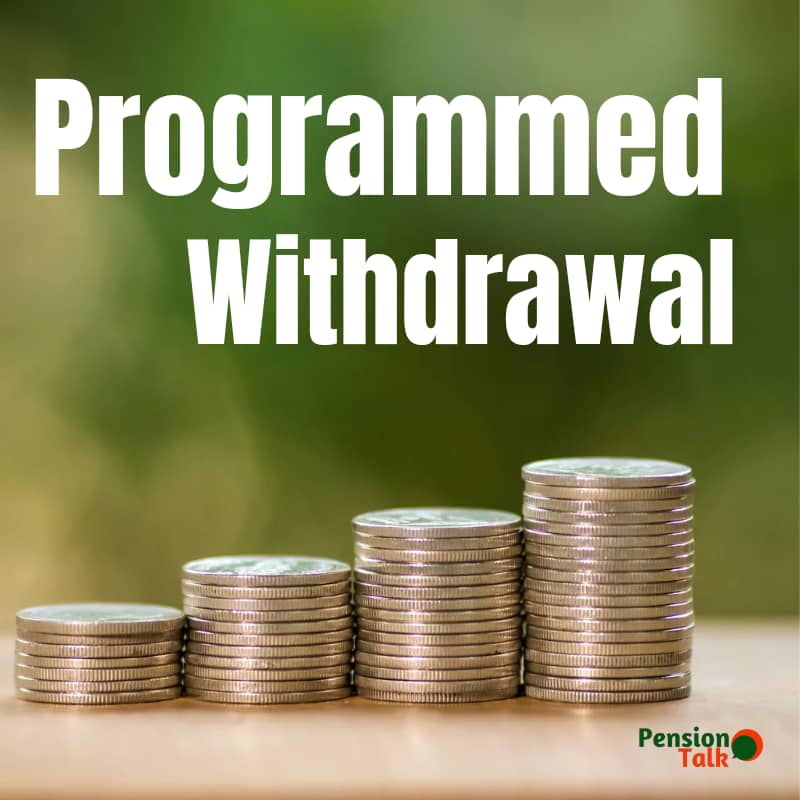
By: PensionTalk
There is always a debate about whether Programmed withdrawal (PW) can pay a retiree for life or not.
This question is very crucial, especially to retirees who wish to choose PW over Annuity.
While the focus of this piece is to address the issue of whether a PW can pay a retiree for life or not, it is also important to debunk some of the misinformation going around when it comes to PW.
There is a widespread misconception, especially around PW about the length of time it pays. Some have even posited that PW only pays retirees for a maximum of 8 to 12 years. Some also think it takes up to 2 years before a retiree can claim his or her retirement benefits under PW and so on.
All these misconceptions are far from the truth. In my opinion, I think the PFAs, who are the main administrators of PW should embark on a serious enlightenment campaign to debunk all the misinformation and also profess what benefits are there for retirees who have chosen PW under the new Contributory Pension Scheme (CPS). This, I believe, will go a long way toward quelling various misrepresentations of what PW truly is.

Before I delve into the intricacies, I want to briefly mention what programmed withdrawal (PW) and annuity are by definition for the purpose of pension payment.
When an RSA holder retires, he or she has the option to either choose PW or Annuity under the CPS.
A PW is a method by which a retiree is paid his or her retirement benefits in periodic sums (monthly or quarterly) throughout the length of an estimated lifespan. The estimated lifespan is derived using a mortality (actuarial) table.
An annuity, on the other hand, is an income purchased from a life insurance company to provide periodic fund (monthly or quarterly) for the retiree during his or her lifetime.
The above 2 definitions, although they sound similar, clearly highlight the clear distinction between the two retirement products. I will explain.
BUY CHEAP MONTHLY DATA FOR AS LOW AS ₦195 per GB ON DATADIRECT.COM.NG
PW by nature, is designed to pay a retiree pension for “an estimated lifespan”. This means that the length of time a retiree under PW will receive pensions is based on a pre-calculated basis, usually determined by a mortality (actuarial) table as approved by PenCom and this is of international best practice as obtained in other parts of the world.
The question then is, why can’t a retiree under PW be explicitly guaranteed by the PFA to be paid pension for life, afterall, it seems like he or she is likely to be paid for life anyway?
The likely answer to that question is that, by its nature, PW is designed to pay a retiree for an estimated lifespan. Unlike annuity, which by its nature, is a payment guarantee to be made for life by the insurance company,
Therefore, the concept of estimated lifespan is one of circumstance and not a way to shortchange the retiree. For PW, it takes into cognizance the fact that it is possible that the retiree lives beyond the estimated lifespan; therefore, the retiree will continue to receive pension from his or her RSA, and any balance remaining in the RSA even after death is paid to the retiree’s beneficiary(ies).
BUY INSTANT ELECTRICITY TOKEN AT NO EXTRA CHARGE ON DATADIRECT.COM.NG
What will happen if the retiree lives beyond the estimated lifespan?
There are 3 possible scenarios that can happen to the RSA balance of a retiree under a PW while the retiree is still alive:
1. A retiree’s RSA balance remains far beyond the estimated lifespan.
2. A retiree RSA balance is exhausted at the end of the estimated lifespan.
3. A retiree RSA balance is exhausted before the end of the estimated lifespan.
In reality, the first scenario is the common occurrence. This is simply because the RSA balance is continuously reinvested to generate returns that keep growing the RSA balance constantly, such that the rate of return could outweigh the rate of withdrawals from the RSA.
However, scenarios 2 and 3 can also happen to some retirees, especially those with small accumulated RSA balances at retirement.
In any case, the retiree will continue to receive his or her periodic pension payment continuously, irrespective of the three scenarios, as long as he or she is still alive.
The only difference in the above cases is that if the retiree dies, as in case 1 above, his or her beneficiary(ies) will be paid whatever is left as the RSA balance, while for the other two cases, their beneficiaries won’t get anything (which is similar to what happens under Annuity after the guaranteed period).
If you like to learn more about the differences between PW and Annuity, you can read it here in our earlier publication.
From the foregoing, it is clear that a retiree under PW will continue to receive his or her periodic pension payment under PW for his or her estimated lifespan or for life if the retiree continues to be alive beyond the estimated lifespan.

